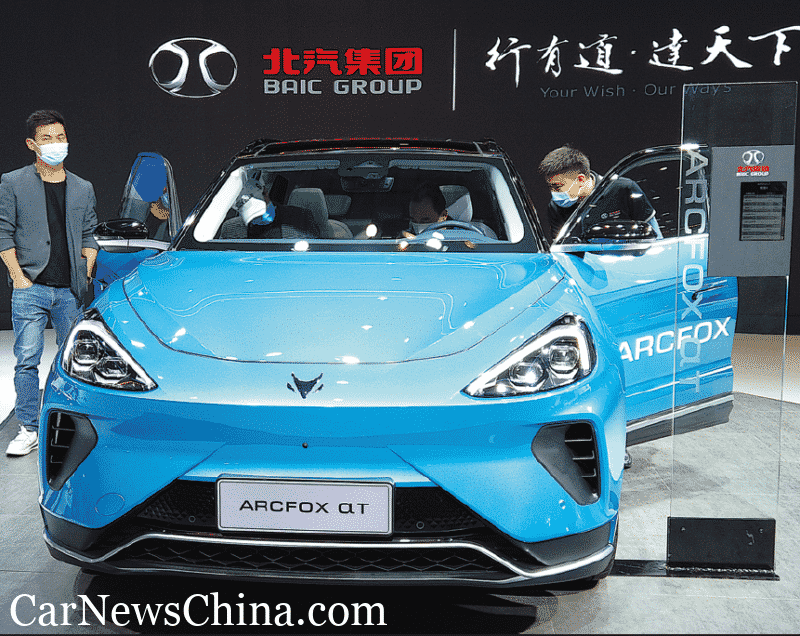China to crush estimates and sell 3 million EVs in 2021, according to CAAM
Recently, Chen Shihua, Deputy Secretary-General of China Association of Automobile Manufacturers (CAAM), said in an interview with The Beijing News that China’s annual production and sales in 2021 will exceed 3 million electric vehicles – far more than expectations at the beginning of the year.
The CAAM, established in May 1987, is a social organization approved by the Ministry of civil affairs of the people’s Republic of China. BYD, GAC, SAIC MOTOR, FAW, Dongfeng Motor Corporation, Chery, CATL, and other automobile companies、automobile industry media、automobile industry chain enterprises are members of this association.
In the interview with the media, Chen Shihua believed that the lack of chips this year has seriously affected automobile manufacturers’ production.
The shortage of chips has continued to affect the automotive industry this year. Chinese vehicle enterprises reduced production by 2.4 million vehicles from January to August, with an impact ratio of 15%. From the perspective of the whole year, it is conservatively estimated that the production reduction of cars due to chip shortage is more than 2.5 million cars. But chip shortage is not created equal as sales of electric vehicles and NEVs are soaring to a new high.
Chen Shihua said that the chip shortage would continue for some time, and the shortage situation may continue until the second half of 2022 and may eventually reach a tight balance.
From January to September this year, China’s production and sales of new energy vehicles completed 2.166 million and 2.157 million, respectively, with a year-on-year increase of 1.8 times and 1.9 times.
In terms of charging station construction, Chen Shihua said that by the end of September, there were about 1.04 million public charging stations in China, and the charging stations built with vehicles accounted for about 75% of cars; The ratio of new energy vehicles to charging stations is about 3:1.
If it is not the peak of holidays, the charging infrastructure is still sufficient. Overall, the development of charging stations can keep up with the growth of new energy vehicles.
As for the reasons for the rise in the price of power batteries for new energy vehicles, Chen Shihua believes that three factors cause it:
First, the structure of battery capacity is unbalanced. Now the power of the whole industry should be close to 300Gwh, but the capacity of high-end cells is insufficient, and the low-end capacity is excess.
Second, the shortage of raw materials. Under the environment of COVID-19, the growth rate of the downstream market is faster than expected, resulting in a mismatch between supply and demand, tight supply and demand of critical materials, and China’s excessive dependence on imports of some essential raw materials such as lithium and cobalt.
Since this year, international commodity prices have continued to rise, with a substantial cumulative increase, and the production cost of power batteries has increased significantly.
Third, to achieve the energy consumption reduction target, some provinces in China have taken power restriction measures, which seriously impact the production of power battery material enterprises and exacerbated the tight supply situation.
However, Chen Shihua believes that the rise in raw material prices will not affect the development of China’s new energy vehicle industry.
Chen Shihua said that at present, the price supply of raw materials is tight, and the price rise is a short-term situation; From the supply side, if the global COVID-19 eased, the cost of the supply side would be reduced. From the demand side, the future market growth of new energy vehicles will not double every year, and the development will tend to be flat.
How will China’s new energy vehicles develop in the future?
Chen Shihua said that from the perspective of the development cycle of China’s automobile industry, new energy vehicles will still grow for at least ten years in the future. If we take a 10-year cycle, the average annual growth rate should be less than 5 in the next ten years.
At present, there are more than 100 new energy vehicle manufacturers in China. In the future, the market concentration will be higher and higher, or it will be highly concentrated in about ten enterprises. From the perspective of the development of China’s independent brands, China’s independent brands can maintain a market share of more than 40% in the future; In the next four to five years, traditional vehicle enterprises will still occupy the leading market share of the new energy vehicle market.
Source: The Beijing News



